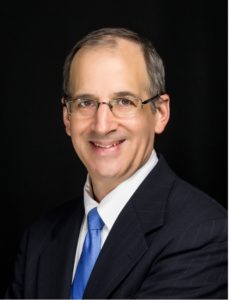Listen to Their Conversation and Attend the Clearinghouse’s Session at the 2021 NASSP National Principals Conference
During a webinar earlier this year, Doug Shapiro, Executive Director of the National Student Clearinghouse Research Center, and Ronn Nozoe, CEO of NASSP, shared their thoughts about two important Research Center reports:
- The early look at fall enrollment as it pertains to the class of 2020 high school graduates
- The annual High School Benchmarks Report on National College Progression Rates for the class of 2019

The Research Center released an update this spring to the High School Benchmarks 2020 COVID-19 Special Analysis that showed a 6.8% decline of high school graduates attending college immediately after high school this past fall, an unprecedented one-year decline. This drop is more than four times larger than the 2019 pre-pandemic rate. The key findings showed:
- The pandemic disproportionately affected graduates of low-income, high-poverty, and high-minority high schools, with their enrollments dropping more steeply than their more advantaged counterparts. Enrollment declines were 2.3 times steeper for low-income high schools compared to higher-income schools.
- Urban and rural schools showed roughly equal rates of decline, and a larger enrollment rate gap from their suburban counterparts.
- Community college enrollment dropped the most in low-income high schools, while public, four-year enrollment was unaffected by the pandemic for high-income high schools.
Here are some excerpts from the webinar:
Ronn Nozoe:
We all went through a crazy year last year and it is a tremendous credit to everyone involved … Students, families—especially the seniors and their families—educators, teachers, advisers, course administrators, principals and assistant principals, and district support staff. The whole K–12 ecosystem banded together to save our seniors last year. But it is really an accomplishment that we were able to maintain and keep these children moving forward.
We are now experiencing this big gap and the data is showing us very clearly that we have a problem, not just with college, going immediately from the seniors from last year and this year’s seniors and juniors. We have this interrupted education gap or phenomenon that started with kindergarten last year in pre-k and it is going to matriculate all the way through the system.
So, while we are focusing today on our high school juniors and seniors that are getting ready to enter postsecondary education or life in the workforce, we are also dealing with, at the elementary level, a cohort of children coming up. We will start to feel the effects of them all the way through the system as we go forward.
The big takeaway is that because of the interrupted education, people want to talk about learning loss and a deficit mindset. We need to think about: What are we going to need to do for children to make sure that they are ready for life in the workforce and beyond?
The Research Center’s data points are really important, especially with the new administration in the White House. So again, the big takeaway is we need to mine this data really carefully and focus on what can we do going forward to provide children with additional opportunities for them to not just catch up, but really for them to take this opportunity to get ahead.
Doug Shapiro:
Yes, it is really important to think about the implications of this, both for the students that are going through it now but also for the students who are coming up behind them, and what it might mean for these students who did not show up for college this fall. What might it mean for them in the long term?
What really frightens me are the implications for those students, their families, our nation, our national economy, and communities with potentially a generation of workers with lower skills, reduced educational attainment, lower employability, and productivity.
I wonder about the students who are no longer in the system … the students who have now left high school. They have left a supported community that was designed to help them make this transition into college. If we want to try and get them back on track into a college pathway, how do we do that? How do we reach them? What actions can the education community and policymakers take to address it?
Ronn Nozoe:
It really starts at the K–12 level, where all these minds and pathways are shaped. So, pushing very hard collectively to:
- Educate people about the data that the Clearinghouse shows your school, the district, and nationally
- Have community conversations with people to educate them and start to create venues for the conversation
- Marshall our voices together for more investment in this K–12 to P20 articulation and the upcoming reauthorization of the Higher Education Act to really talk about higher education reaching down into K–12

Listen to Ronn and Doug’s conversation, and register to join the National Student Clearinghouse’s session at the 2021 NASSP National Principals Conference!
Additional Resources/Links:
